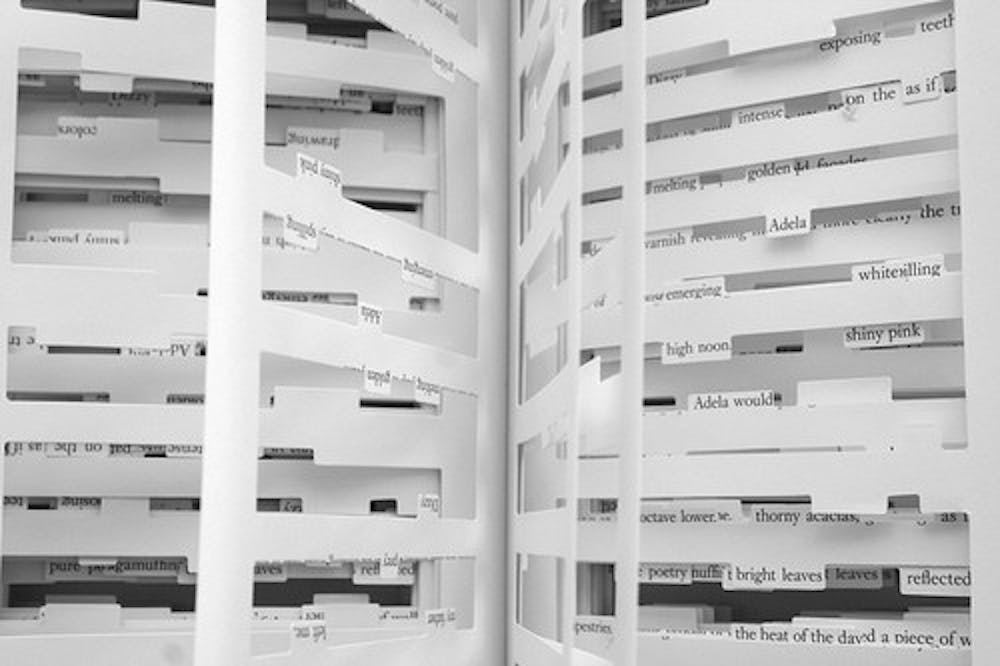Thanks to its ingenuity and irrepressible complexity, I have no idea how to identify best-selling author Jonathan Safran Foer’s most recent project. For the sake of clarity, I suppose we can call it a book. But many would justifiably argue that Tree of Codes is much more than a book, or not a book at all, and I would agree.
The young author has been impressing readers for years now, with both of his novels, Everything is Illuminated and Extremely Loud and Incredibly Close, being developed into film adaptations. His style is compelling, vivid and personal. Foer tentatively stretches past barriers of literature and into other artistic realms in both of these novels with experimental type and images; Extremely Loud even includes an illustrative flip-book at the end. However, neither hold a candle to his third novel, which almost destroys the limitations of medium Foer had previously only brushed up against.
The book is composed of pages of text from Polish author Bruno Schulz’s collection of stories, The Street of Crocodiles. To create a completely new story out of these pages, Foer cut and moved the words using a die-cutting machine. The whole task was so tedious and time consuming that the American novelist and short story writer had to implore several publishers before Visual Editions in London finally agreed to publish it.
The result of this effort is a book with clean, yet fragmentary pages. Some of the words in the pages beyond are visible through the holes, and the reader has a whole lot more to focus on. There are irregular spaces in between, above, and below each sentence and sometimes each word, as some pages are close to full, while others are barely more than a paper scrap. The reader’s eyes have to work. Reading the book becomes a journey in a really physical sense, and the words themselves become literal objects of art.
While there’s something unique, groundbreaking, and impressive about Foer’s medium, the art itself is still nothing more than a fragmented piece of text. Tree of Codes is holes. It’s empty spaces. I mentioned the difficulty of classifying the book, but the problem of summarizing the story within the book surpasses any issues of identification. I think I can say that the story is more of a poem than a novel. I’m not a poet by any means, so I can say very little else about the plot, except that it takes a really short time (30 minutes, 45 tops) to finish.
However, I don’t think that Foer’s method and medium can possibly be the whole reason this book ends up seeming incomplete as it details the last living days of the main character, Father. I also don’t think this incomplete feeling is necessarily bad. The author has always had a distinctly post-modern style – one that leaves out just as much as it gives. Tree of Codes is no exception, as the sentences comprise a combination of sensations and images to follow Father through his delicate and powerful interactions and into a dreamlike conclusion. The confusion of reality, the sensational images, and the emotions evoked by this poem/story are the genuine Foer many readers, especially this one, already know and love.
But the sculptural art created by his unique die-cutting method create an interaction with the reader more profound than Foer’s other novels ever could. As a book, Tree of Codes is slightly incohesive, which is why Foer created more than a book. It becomes a work of art, both tangible and ethereal, and it’s definitely a rewarding experience.
'Tree of Codes' reinvents the novel

The unusual construction of Tree of Codes.



